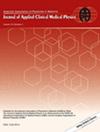Stereotactic radiosurgery for multiple small brain metastases using gamma knife versus single-isocenter VMAT: Normal brain dose based on lesion number and size
Abstract
Purpose
The study evaluates rapid linear accelerator (Linac) single isocenter stereotactic radiosurgery (SRS) with Hyperarc for large target numbers. We compared to Gamma Knife (GK), which suffers from long treatment times and investigated causes of differences.
Methods
Linac SRS and GK treatment plans for patients receiving 18 Gy to the gross tumor volume (GTV) were evaluated for mean brain dose and volume of brain receiving 12 Gy or more (V12 Gy) as toxicity correlates. Further investigations included patient-based and simulations of 1–33 brain metastases to compare the ability of Linac SRS and GK to separate adjacent and distant lesions.
Results
For three patients (33, 33, and 18 metastases), GK reduced mean brain dose (2.89 Gy, 2.38 Gy, 2.79 Gy) compared to 2.5 mm microMLCs (4.36 Gy, 4.75 Gy, 4.26 Gy, p = 0.027) and 5 mm MLCs (4.71 Gy, 5.22 Gy, 4.60 Gy, p = 0.024). GK also improved V12 Gy (13.29 cc, 11.62 cc, 33.79 cc) compared to microMLC (25.31 cc, 30.91 cc, 54.71 cc, p = 0.019) and MLC (31.69 cc, 33.68 cc, 54.71 cc). This must be balanced with GK treatment times (5–11 h). GK achieved 50% prescription line separation at smaller distances (1.8–7.6 mm) than microMLC (7.7–10.2 mm) or MLC (8.8–12.2 mm) for 0.5–1.0 cm targets (4–8 mm collimator single shot). For 1.5 cm targets (16 mm shot) results were mixed (GK 5.4–17 mm, microMLC 9.5-11.2 mm, MLC 9.5–11.3 mm). A 7.7 cm simulation cube was then incrementally filled with 0.5 cm or 1.0 cm equidistant targets. GK plan mean brain dose increased 0.04 Gy/target (1.08 Gy mean/27 targets) compared to 0.14 Gy/target for microMLC (3.78 Gy mean/27 targets) for 0.5 cm targets, with differences diminishing for 1.0 cm targets (GK 0.15 Gy/target, microMLC 0.17 Gy/target).
Conclusions
For numerous small metastases GK improves dosimetry but has exceedingly long treatment times. GK improves dose separation for adjacent lesions < 1.0 cm and conformity for small (∼0.5 cm) targets. GK and Linac differences are small for individual targets but compound over many targets. V12 Gy limits in the NCIC CE.7 trial protocol mandate dose modifications for Linac SRS but not GK.

 求助内容:
求助内容: 应助结果提醒方式:
应助结果提醒方式:


